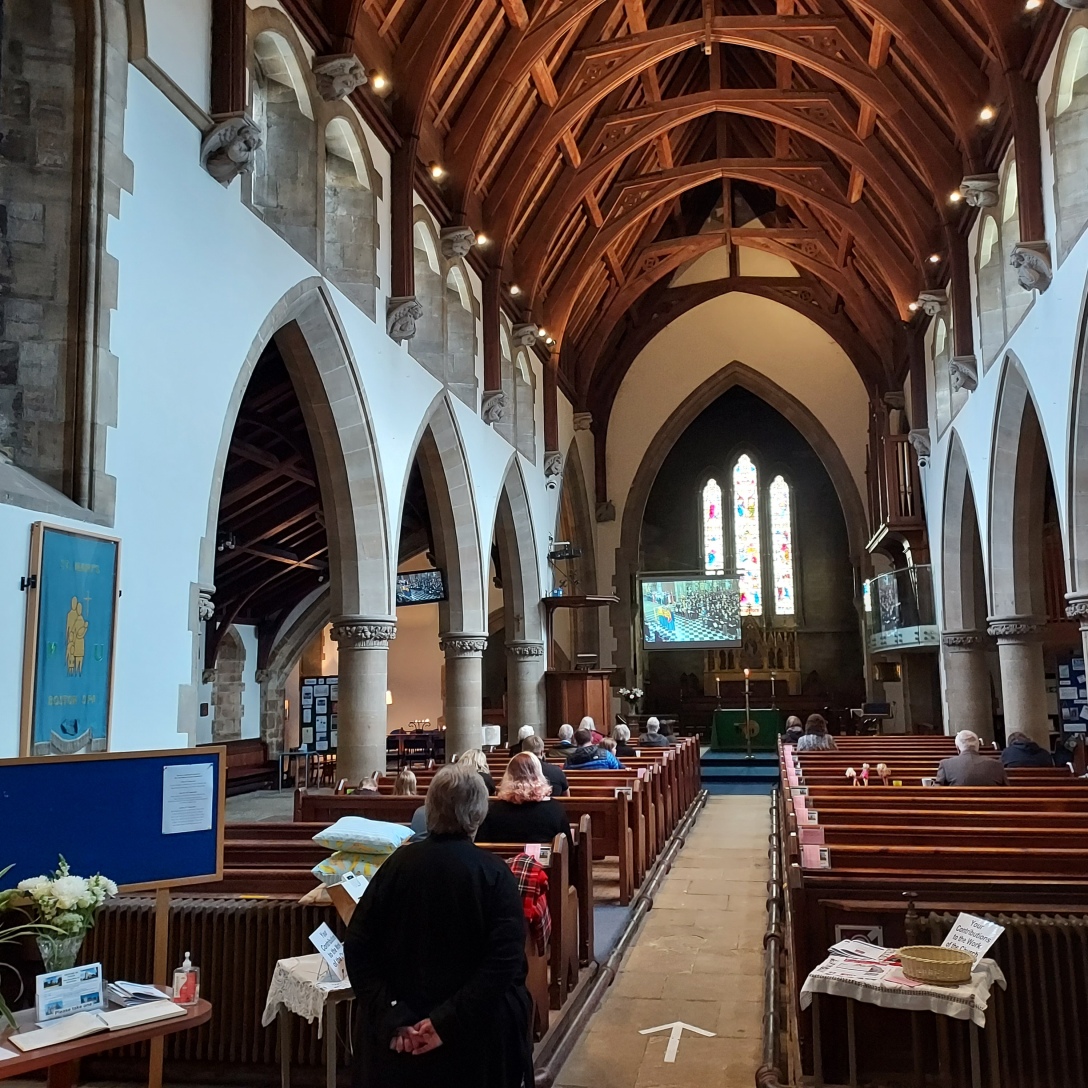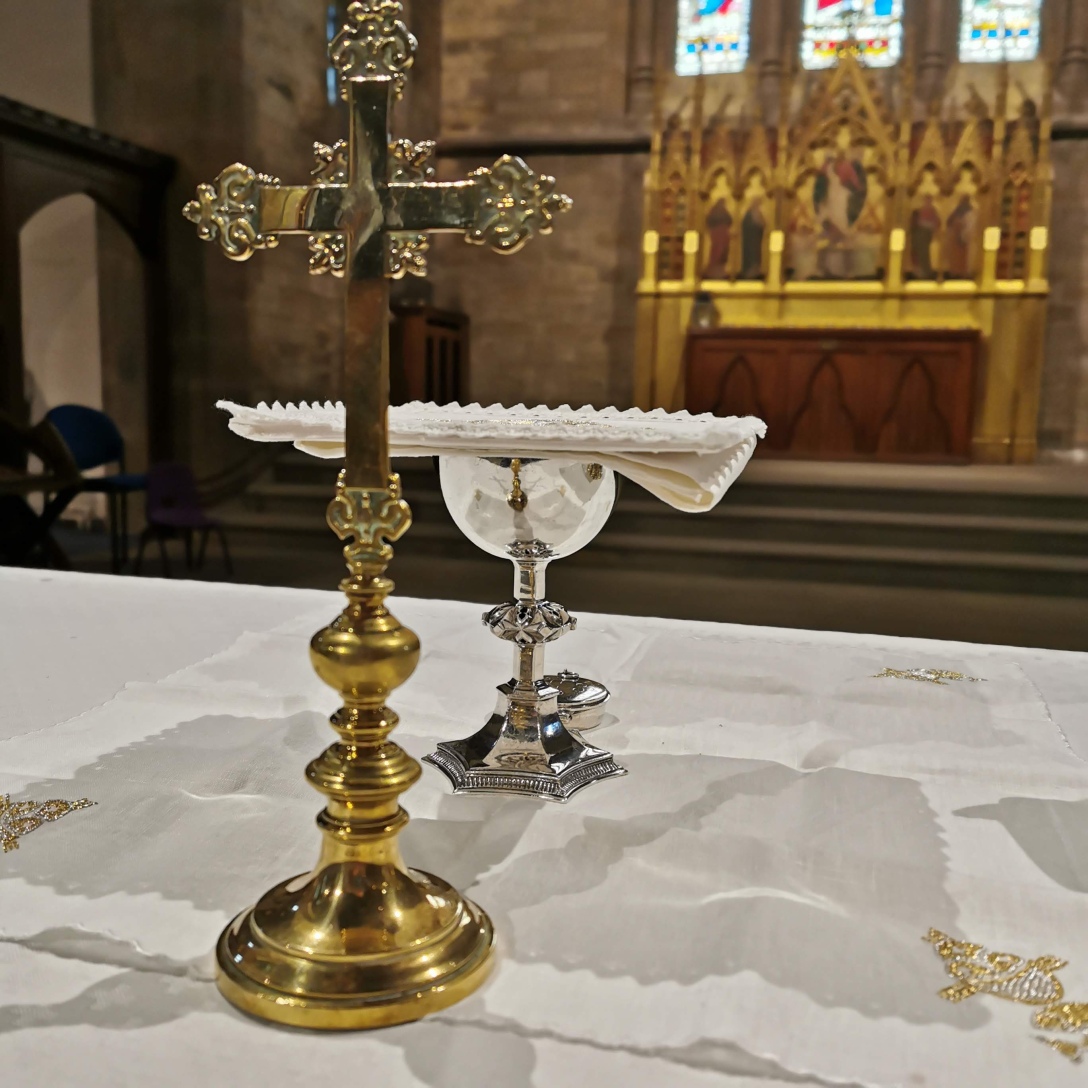Tag: poem
On the morning of Her Majesty’s Funeral
Stones at a Remove
Stones at a Remove
A standing stone,
Place of gathering,
Landmark on a hill.
A place seen from far off:
Somewhere to aim for.
Speaking of more than stone,
Being more than a beacon:
Emblem of companionship,
Presence of encouragement
On faith’s journey.
Articulating rootedness:
Community of ages,
Speaking of destination
Even to those
Not knowingly on that journey.
Icon of Light.
Sign of Christ.
Agent of the Holy Spirit.
Virtually visible
Yet literally present
Where utterance enters heart;
Where conversations continue;
Where God’s love and relationships bloom.
Witness to life in Christ,
Inviting a threshold-crossing
Into standing in the flesh
Among living stones
Who continue to build, be built and to bless.
A standing stone,
Place of gathering,
Landmark on a hill.
A place seen from far off:
Somewhere to encounter God.
written 6th June 2015, Upper Church, Community of the Resurrection, Mirfield
I wrote this poem for Sian Lawton as she took on my former role as Ripon Cathedral’s online ministry co-ordinator back in 2015, but here in 2021 it has fresh resonance with the post-lockdown importance of renewing our ministry in church buildings.
It is a reflection on the complementary nature of online and church building-based ministry and worship. The standing stone refers to the Anglo Saxon gathering stone in the churchyard at Ripon (near its southwest corner, and which looks like a spent match) – an ancient place to gather in worship, but a very different expression of gathered worship to even what went on in St Wilfrid’s 7th century church on this site. Places and forms of worship evolve.
Online church, and the church building have in the poem the same role, and are guided by the same Spirit.
Now
Now
Now.
Time flies:
Fast over rocks,
Slow over the deeps.
Broadly over big sky vistas;
Through narrow channels in picturesque uplands.
A snapshot alone: the moment;
The ‘now’ isn’t grasped.
It washes past,
Not surfed:
Held.
Note: this is a multiple palindromic poem and, because we like to measure (that is, ascribe numbers to) time, there is also a mathematical structure to this beyond the palindromes. The word count, syllable count and final punctuation for each line each are palindromes.
The word count per line is a palindrome of 1,2,3,4,5,6.
The syllable count per line is a palindrome of 1,2,4,5,8,11.
If you take the differences between consecutive numbers in the latter sequence and then take the difference between the resulting sequence and then the next and the next etc… it resolves to zero in 11 sequences (the same as the number of lines):
1,2,4,5,8,11,8,5,4,2,1
1,2,1,3,3,3,3,1,2,1
1,1,2,0,0,0,2,1,1
0,1,2,0,0,2,1,0
1,1,2,0,2,1,1
0,1,2,2,1,0
1,1,0,1,1
0,1,1,0
1,0,1
1,1
0
Shakespeare on dreams
When the Music Stops
When the music stops and the world just hangs
in the air as time just holds her breath;
and I hardly dare let my mind form words
lest they break the sense of holiness I feel
when the music stops.
When the stylus lifts but the vinyl turns
till I walk across and make it stop;
there’s a stillness there as the music sits
deep inside my heart and holds me there
as if the song is hearing me
once the music stops.
And I didn’t want the song to end,
and I relished every moment,
and I wish I could inhabit
all those twists and turns and laughs and tears
as fully as I did the instant
that I first experienced them.
But now I stand enveloped in
this very sacred moment
as the music stops.
The music stops: the world just hangs
in the air; time holds her breath.
I do not dare let my mind form words:
they’d break this sense of holiness.
The music stops.
I knew these words were a song as soon as I wrote the poem, but the music just wouldn’t come. I sat at the piano. I sat with a mandolin. The song was almost audible, as if just round a corner, but nope, nothing would come. Lockdown due to the Covid-19 pandemic had given me songwriters’ block generally for the past year or so.
And then, more than a month later, I decided to doodle at the mandolin with these lyrics. I set the video on my phone running so I could later use that to help me write the song. To my surprise, the soundtrack to the above video just “happened”. The song had been there all along, as I suspected.
Yes, I could re-record this in a more polished performance – more even chords, better vocal technique and so on, but it seemed appropriate to simply share the moment the music started.
– 7th March 2021, NJM
The Table: a Christmas poem
This is a poem I wrote in 2014 which has been used by a number of people in Christmas services. It puts a slightly different spin on things…
Feel free to use this in your own services, with author credit to Nick Morgan
The Table
‘Twas the night before Christmas
And all through a stable
A man was attempting
To construct a table.
In spite of his skill
At the carpentry trade
His tools on a workbench
In Nazareth were laid.
The manger in which
All the fodder was scattered
Seemed solid enough
And that was what mattered.
For that was the main thing:
A solid, safe cradle
Was needed in case
Of a birth in that stable.
But Joseph got busy
And lashed up some poles
And some planks with some rope
That he’d found by the foals
And managed to make
A table, quite steady
And sturdy enough
In case baby was ready.
The night passed and
Jesus was born in that place.
The table lay, unused,
But stood, just in case.
Visitors came
And were slightly perplexed:
When attempting to use it,
Young Joseph got vexed.
The point of the table
Was not clear to them;
Was not clear to Joseph
Nor all Bethlehem.
But Joseph was certain,
Could feel in his gut,
That a table was key
To events in this hut.
The women said, “Typical!
Building and fussing, and
Making that thing
While Mary was pushing!”
Joseph, however, stayed
Faithful and still,
Content in his knowledge
That this was God’s will.
Joseph had heard
The right message, it’s true
And acted upon it
But hadn’t a clue
That his timing was out:
No table required
For the birth of God’s son
Whom the shepherds admired.
But the Body and Blood
Came to earth on that day
In that stable
In the form of a babe in the hay.
And the table came later.
It bore bread and wine.
When Christ died for all
It remained as a sign.
Nick Morgan, 2014


At the table, we remember.



